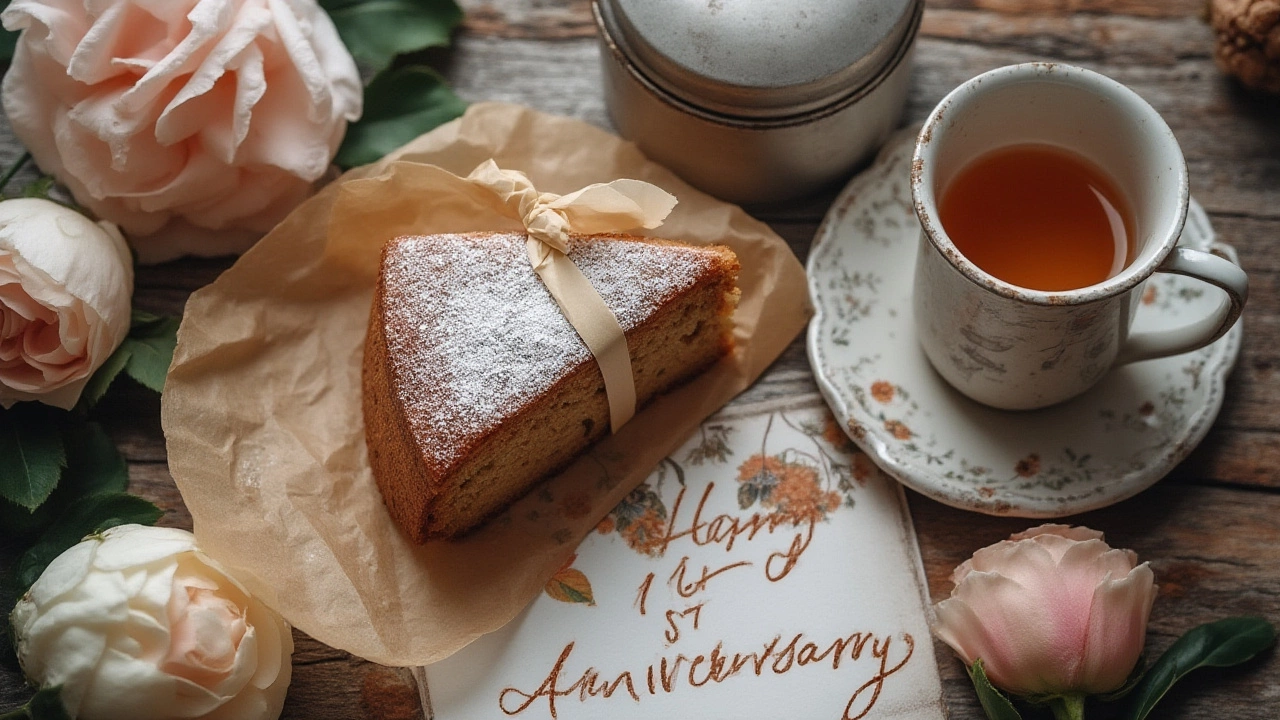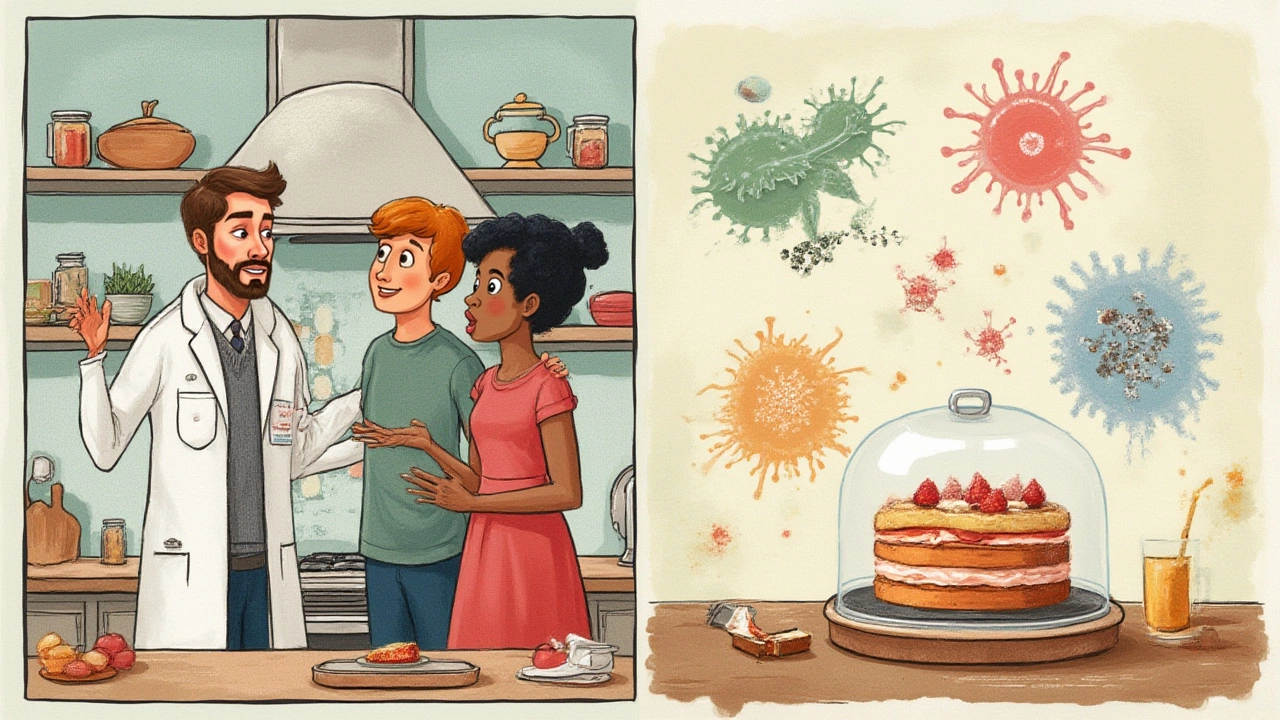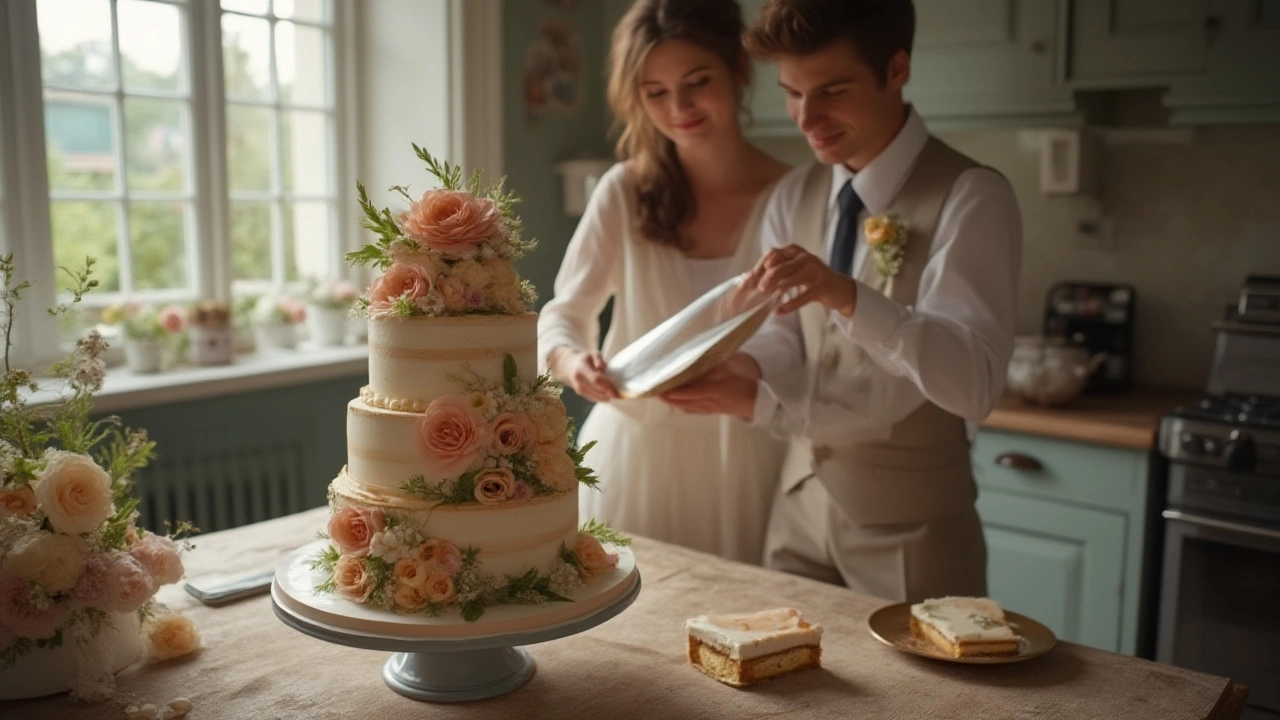Ever looked at your freezer and spotted that odd, frosty lump in the back—the top tier of your wedding cake, waiting for its moment of glory on your first anniversary? If you’ve ever been torn between digging in and tossing it out, you’re not alone. Plenty of couples save that cake as a sweet anniversary tradition, but biting into a year-old dessert stirs up one big, practical question: can you actually eat a 1 year old wedding cake without risking your stomach? Turns out, there’s more science, superstition, and frosty finesse to this milestone snack than most people realize.
Where Did the Tradition of Saving Wedding Cake Come From?
Slicing into cake that’s been chilling since last July isn’t just a quirky party trick; it’s a ritual grounded in history. This whole tradition started way before modern freezers were a thing. Back in 19th-century England, couples stashed fruitcakes (which are basically the superheroes of cake when it comes to shelf life) to eat on their first child’s christening—usually within a year of the wedding, since babies often followed pretty fast. Fruitcakes loaded with booze and dense nuts could outlast seasons without breaking a sweat or inviting mold.
By the 20th century, the cake-saving idea shifted to anniversaries, especially in places like the US, where wedding cakes changed from heavy fruitcakes to airy vanilla or chocolate creations with rich buttercreams. This switch made the tradition a lot riskier—fruitcake is practically immortal, but buttercream’s got a short fuse in the freshness department. These days, most couples store a tier of cake to share on their one-year mark, thinking it’ll bring luck and keep those honeymoon vibes going. Some even believe the shared slice builds resilience for the year ahead. The sentimental pull is real, but it’s definitely a custom that’s changed with our fridges and taste buds.
Still, not all cakes are created equal. What worked for Grandma’s brandy-soaked fruitcake doesn’t always fly with carrot cake loaded with cream cheese. There’s also a regional twist—Australian couples, for example, are much more likely to freeze mud cake than Americans, simply because of tradition and climate. So before taking a bite, it's worth understanding what your cake’s made of and how folks have really kept this tradition up (and safe) across generations.
Can a Wedding Cake Actually Survive a Whole Year?
It sounds sort of wild, but science says yes—at least, if you play your cards right. Freezing, when done fast and right, puts bacteria and mold spores in a deep freeze, practically hitting pause on spoilage. Commercial bakeries regularly freeze goods to keep them fresh for months. But a homemade wedding cake is a whole other story—different fillings, frostings, and wraps can mean the difference between cake that’s a pleasant surprise or a culinary science project gone wrong.
Buttercream and fondant are your best friends for freezing, especially if the cake doesn’t have any fresh fruit filling or cream cheese layers (cream cheese might separate, get grainy, or grow unpleasant textures as it thaws). Dense cakes like chocolate or carrot usually handle the cold better than super-light sponges, which can turn rubbery or dry out. Whipped cream and custard are notoriously fickle in freezers and can separate in weird ways. The big tip from pastry chefs: the faster you freeze it, the better. Wrap everything in multiple layers (plastic wrap, foil, sturdy freezer bag) to keep as much moisture in and as much freezer smell out as possible.
Temperature matters too—most home freezers work at around 0°F (-18°C), which is solid for food safety. But constant door-opening or power outages drop that number, upping the spoilage risk. According to the U.S. Department of Agriculture (USDA), cakes can last 2–4 months in the freezer at peak quality, but they don’t truly “go bad” in a food poisoning sense (unless they thawed and refroze along the way). The taste and texture, though, will start to suffer after about a year—sometimes long before then, especially if the cake was exposed to air.
If you want numbers, here’s a quick look at how long different types of cake can survive in decent condition when frozen right:
| Type of Cake | Good Quality (in Freezer) |
|---|---|
| Fruitcake (with spirits) | 12+ months |
| Butter cake (basic, no filling) | 8-12 months |
| Chocolate or carrot (no dairy filling) | 6-8 months |
| Cake with cream cheese/whipped cream | Up to 2 months |
| Cakes with fresh fruits | 2-3 months |
| Assembled layer cake (most common wedding cake) | 6-12 months |
The takeaway: a simple cake that’s been double-wrapped and frozen soon after the wedding stands a solid shot at surviving—and even being tasty—by the time you reach your paper anniversary.

Health Risks: What Really Happens When You Eat Year-Old Cake?
Here’s the part nobody wants to talk about: old cake can make you sick. The real worry isn’t just about taste; it’s the tiny things you can’t see. Mold, bacteria, and freezer burn are the usual suspects, but they’re not guaranteed if you’ve stored your cake like a pro. According to the CDC, Listeria and Salmonella are the top culprits for food poisoning from improperly stored dairy items—including the frostings and fillings in most wedding cakes.
Symptoms might start as mild stomach upset but can turn into nasty vomiting, serious cramps, or even long-term gut issues for people with compromised immune systems. Not fun on your anniversary. That being said, Freezing stops most bacteria and mold in their tracks, but it doesn’t kill everything. If your power went out for a day, or your freezer swings warm because it gets opened a lot, those bugs can start multiplying again. Once a cake thaws, it’s best to eat it within two days and not refreeze leftovers. If it smells like wet socks, shows weird colors, or tastes “off,” stop and toss it. No anniversary is worth food poisoning.
Food safety experts recommend using your senses first: if the cake looks, smells, and tastes normal, and you know it’s never thawed out and refrozen, it’s probably safe for most people. But be extra cautious if you’re pregnant, immunocompromised, or serving elderly guests. Babies shouldn’t touch it at all. If you don’t want to take any risk but still crave that nostalgia, consider asking your baker to make a fresh “replica” anniversary tier—that’s a growing trend and removes the guesswork.
Bonus tip: if you’re determined to eat the original, make sure you thaw it overnight in the fridge, not on the counter. Slow-thawing keeps bacteria at bay and helps the cake keep its shape. And hey, sharing the first bite with your spouse might just turn into a hilarious, unforgettable memory—good or bad.
How to Store Your Wedding Cake: Tips for a Year of Freshness
Nobody wants to unwrap a freezer-burnt brick or deal with a mushy, funky-smelling slab on their anniversary. The key? Treat your top tier like a VIP from the very start. Right after the wedding, have someone who isn’t too tipsy, preferably your coordinator or a trusted friend, carefully pack it up ASAP. Exposed cake dries out, so getting it into the freezer quickly keeps texture and flavor closer to “wedding day magic.”
Here are the non-negotiables for safe wedding cake storage:
- Remove decorations: Sugar flowers, fresh flowers, and plastic toppers should come off before freezing. They’ll just get mushy or weird.
- Chill first: Pop the cake in the fridge for an hour to firm up the icing, so it won’t smear when you wrap it.
- Wrap like you mean it: Start with a tight layer of plastic wrap—at least two layers—so no air hits the cake. Then wrap in a sturdy aluminum foil to block smells and reduce freezer burn.
- Stash in a container: Place the wrapped cake in an airtight container or a good freezer bag. Label it, so you don’t confuse it with that mysterious lasagna.
- No freezer-burn zone: Put it in the coldest part of the freezer (usually the back, not near the door).
When you’re finally ready to eat it, transfer the cake (still wrapped) from the freezer to the fridge the night before your anniversary. Let it thaw slowly about 24 hours, then give it a hearty, hopeful sniff before serving. If it’s soggy or smells weird, don’t be a hero—grab a spoon and buy yourself a new cake. You can even get creative with the leftovers, using thawed cake to make cake pops, trifles, or as a decadent ice cream mix-in.
Modern couples are now starting to ask their bakers for a mini replica for the anniversary, so they get all the feels without the risk. This option is great if storage space or food safety is a concern, and bakers are usually happy to oblige (and maybe sneak in a congratulatory card, too).

Anniversary Cake Customs Around the World (And Modern Alternatives)
Not everyone saves their wedding cake, and not all traditions are about year-old sweets. In Italy and France, for example, people make a fresh tier for the first anniversary or just toast with nice bubbly instead. Traditional English couples might keep on with dark fruitcakes, which can honestly last a decade if soaked in spirit and wrapped right—no exaggeration. Australians, as I mentioned earlier, might freeze mud cakes. Latin American couples sometimes celebrate anniversaries with all-new desserts that feature fruit or custard, ditching the old cake worry altogether.
In the US, replica cakes have become quite the thing—couples will send their original cake home with guests and then order a fresh version a year later. It sounds less romantic, but it’s a lot less risky on your gut. Some couples use their old cake as part of a new dessert, mixing it with ice cream, pudding, or as part of ‘anniversary cupcakes’ for friends. The main idea is keeping that sweet memory alive in a way that fits your tastes and lifestyle.
Food safety organizations, like the FDA and USDA, stress that it’s all about your comfort with risk. If your cake looks, smells, and tastes the same as when you froze it, and you followed safe storage to the letter, your frozen wedding memories should be safe enough for most people. For anybody getting married soon, talk to your baker about future storage—make sure your cake design doesn’t have fillings or extras that turn scary in the freezer. A little planning today means you’re not anxiously sniffing at a mystery dessert a year from now.
So, can you eat a 1 year old wedding cake? The answer is yes—with the right cake, perfect storage, and a pinch of luck. Whether you thaw the real thing or opt for a fresh-made twin, the shared slice will always be more about the memory than the actual pastry. Cheers to another year of fun, laughter, and cake—no matter how you serve it.

